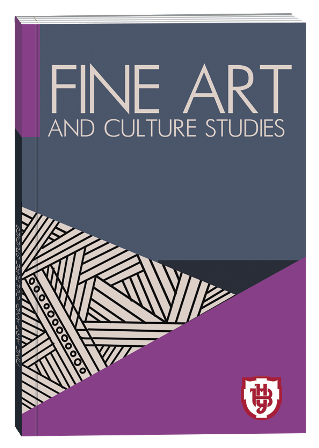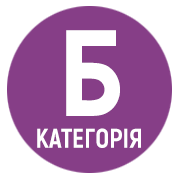PRINCIPLES OF TIMBRAL ORGANIZATION IN O. SHCHETYNSKY’S STRING QUARTET
DOI:
https://doi.org/10.32782/facs-2025-4-28Keywords:
timbre, texture, ensemble music, principle of timbral integration, principle of timbral disintegration, integration and disintegration, principle of timbral inertia, principle of timbral activity, the works of O. Shchetynskyi, contemporary Ukrainian musicAbstract
The relevance of this study is determined by the growing interest in contemporary Ukrainian chamber music, in which the timbral dimension assumes a leading role as both a structural and artistic-expressive factor. The aim of the article is to analyze the principles of timbral organization in Oleksandr Shchetynskyi’s String Quartet (1991) based on the oppositional categories of integration/disintegration and inertia/activity. The scientific novelty of the work lies in introducing the composition into scholarly discourse and demonstrating how microthematism and microchromatics, highlighted by the author in the preface, function in close connection with timbral and textural processes, forming an integrated system of material organization. The analysis reveals that the principles of timbral organization operate at levels ranging from local elements (secondmotif, pizzicato, glissando, harmonics) to larger structural sections. The principle of integration ensures the stability of textural layers, uniformity of dynamics, register, and articulation, creating a cohesive sound and meditative character in the second movement and the finale. Disintegration is realized through variation in register, dynamics, articulation, and sound-production techniques, contributing to motivic-thematic transformation, polyphonic density, and dramaturgical contrasts in the first and third movements. Inertia emphasizes the constancy of sound-production techniques (legato, pedal figures), supporting the internal stability of voices and gradual material development, whereas activity is manifested through rhythmic and timbral-textural variability, providing dynamic development and expressive depth in each section. The finale demonstrates a synthesis of these principles: integration predominates, while local manifestations of disintegration and activity create subtle dramaturgical accents, approaching an open, postmodernist model of closure. Timbral organization thus serves as the primary means of material development, replacing traditional thematicism and ensuring cohesion and multidimensionality within the quartet’s structure.
References
Boulez P. Timbre and composition – timbre and language. Contemporary Music Review. 1987. No2 (1). С. 161–171.
Калашник М. Звукообраз фортепіано у творчості О. Щетинського. Fine Art and Culture Studies. 2025. Вип. 1. С. 73–80. DOI: https://doi.org/10.32782/facs-2025-1-11
Larson S., Van Handel L. Measuring musical forces. Music Perception. 2005. No23 (2). С. 119–136.
Максимчук В. В. Особливості музичної мови фортепіанних творів Олександра Щетинського : магістер. робота. Львів, 2022. 65 с.
Палійчук І. С. Жанрово-стильові та виконавські особливості творчості для духових інструментів О. Щетинського. Мистецтвознавчі записки: збірник наукових праць. 2023. Вип. 43. С. 123–128. DOI: https://doi.org/10.32461/2226-2180.43.2023.286847
Рудь П. В. Еволюція композиторського стилю Олександра Щетинського : дис. … канд. мистецтвознав. : 17.00.03 / Нац. ун-т мистецтв ім. І. П. Котляревського. Харків, 2021. 220 с.
Savchenko H. S. Смисли та коди в інструментальних творах О. Щетинського. У кн. Modern Ukrainian musicology: from musical artifacts to humanistic universals : Колективна монографія, с. 231–251. Рига : Baltija Publishing, 2021. DOI: 10.30525/978-9934-26-072-8-12
Савченко Г. С. «Lacrimosa» Олександра Щетинського: музика, написана під час війни з вірою в перемогу Людяності і Світла. Проблеми взаємодії мистецтва, педагогіки та теорії і практики освіти. 2023. Вип. 66. С. 108–125. DOI: 10.34064/khnum1-66.07.
Савченко Г. С. Оркестрове мислення Олександра Щетинського: звук, простір, матерія. Рига : Baltija Publishing, 2023. 202 с.
Smalley D. Defining timbre – Refining timbre. Contemporary Music Review. 1994. No10 (2). С. 35–48.
Щетинський О. С. Струнний квартет (1991) [Ноти] : партитура. 46 с.








